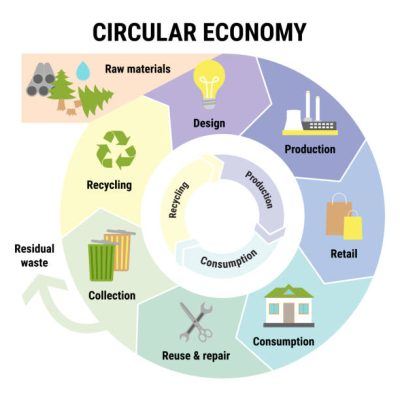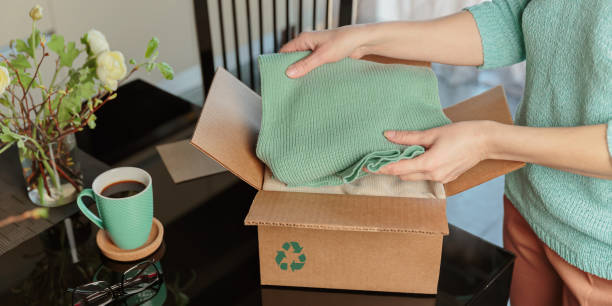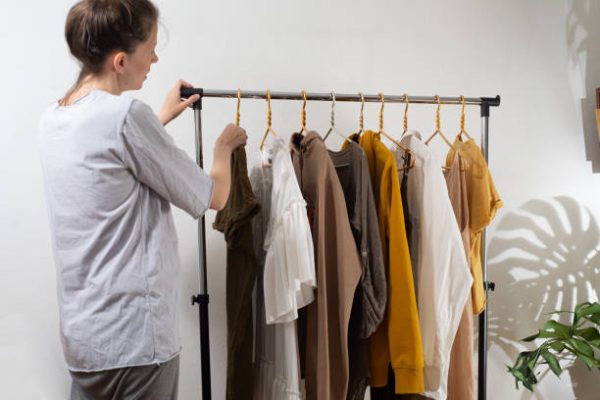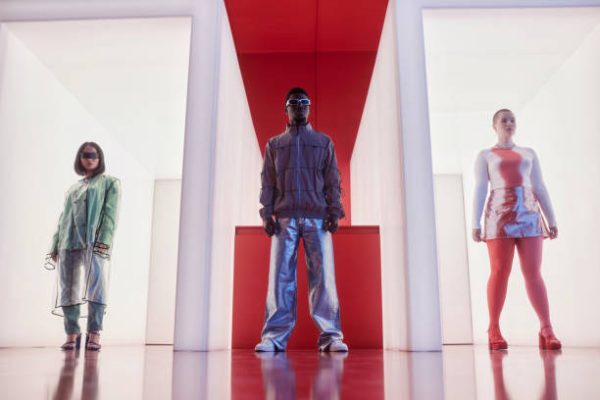- What Is a Circular Economy in Apparel Fashion?
- Why Move Beyond Fast Fashion?
- Key Elements of a Circular Economy in Apparel Fashion
- The Benefits of Circular Economy in Apparel Fashion
- Challenges in Transitioning to a Circular Economy
- The Future of Apparel Fashion in a Circular Economy
- Conclusion
- About IGREEN TEX
- IGREEN TEX VIETNAM CO LTD
In recent years, the fashion industry has faced growing concerns about the negative environmental impact of fast fashion. This model focuses on quick production, cheap materials, and constant consumer demand. However, this approach leads to a massive amount of waste, pollution, and depletion of natural resources. As awareness grows, a new trend has emerged — circular economy in apparel fashion. This model focuses on sustainability, recycling, and reducing waste, offering a greener future for the fashion industry.
What Is a Circular Economy in Apparel Fashion?
A circular economy in fashion is a system where products are designed, produced, and used in a way that minimizes waste and maximizes the lifespan of each item. In contrast to fast fashion, which encourages consumers to buy and throw away clothes quickly, circular fashion aims to keep clothing in use for as long as possible. This is achieved through various methods, such as recycling materials, upcycling old clothes, and encouraging repairs.

Why Move Beyond Fast Fashion?
Fast fashion has fueled a culture of overconsumption, with clothes often being worn just a few times before being discarded. This leads to enormous textile waste, with millions of tons of clothing ending up in landfills every year. Additionally, fast fashion relies heavily on non-renewable resources, contributes to water pollution, and is responsible for a significant share of carbon emissions.

A circular economy in apparel fashion addresses these issues by:
- Reducing waste: Instead of throwing away clothes, they can be repaired, resold, or recycled into new products.
- Saving resources: Recycling materials such as cotton or polyester reduces the need for virgin materials, conserving water and energy.
- Lowering emissions: By extending the lifecycle of clothing, fewer resources are needed for production, which leads to lower carbon emissions.
Key Elements of a Circular Economy in Apparel Fashion
- Sustainable Design
Circular fashion starts at the design stage. Clothing is created to be durable, versatile, and timeless. Designers are now using materials that are either recyclable or biodegradable, ensuring the products have a longer life. Eco-friendly fabrics like organic cotton, hemp, and recycled polyester are commonly used. - Recycling and Upcycling
One of the core ideas of the circular economy is reusing existing materials. Old clothes can be recycled into new fabrics, reducing the need for raw materials. Upcycling, where discarded clothes are creatively transformed into new garments, is also a popular trend in circular fashion. - Resale and Rental Models
Clothing rental services and second-hand shopping have become more popular in recent years. These models give clothes a second life, reducing waste and the demand for new items. Brands like Patagonia and H&M have introduced take-back programs where customers can return old clothes for recycling or resale. - Repair and Maintenance
In a circular fashion system, consumers are encouraged to repair their clothes rather than replace them. Some brands offer repair services or sell clothes designed to be easily fixed. This extends the life of garments, keeping them out of landfills for longer. - Innovative Materials
Fashion companies are investing in innovative materials that fit into a circular economy. For example, fabrics made from recycled plastic bottles or biodegradable fibers are becoming more common. These materials help reduce the environmental impact of clothing production.
The Benefits of Circular Economy in Apparel Fashion

Moving towards a circular economy in apparel fashion has several key benefits:
- Environmental Impact: Circular fashion significantly reduces textile waste, water usage, and greenhouse gas emissions. It helps preserve natural resources by recycling and reusing materials.
- Economic Opportunities: This model opens up new business opportunities for fashion companies, such as repair services, clothing rentals, and resale platforms.
- Consumer Awareness: Consumers are becoming more conscious of their impact on the planet. By choosing circular fashion, they can make more sustainable choices and contribute to a healthier environment.
Challenges in Transitioning to a Circular Economy
Despite its benefits, the transition to a circular economy in apparel fashion faces challenges. One of the main obstacles is the current system’s dependence on fast, cheap production. Circular fashion requires a shift in mindset from both brands and consumers. For brands, it means redesigning supply chains and investing in sustainable practices. For consumers, it requires a change in behavior, moving away from throwaway culture towards a more thoughtful approach to clothing consumption.

The Future of Apparel Fashion in a Circular Economy
As we move forward into the 2020s, it’s clear that the future of apparel fashion lies in circular practices. Governments, brands, and consumers are all recognizing the need for change. Many companies are already investing in sustainable innovations and developing circular business models that prioritize longevity, recycling, and reducing waste. Additionally, the rise of technology in fashion, such as 3D printing and biodegradable textiles, will continue to shape the future of the circular economy.

Conclusion
The fashion industry is undergoing a transformation. The days of fast fashion are slowly fading, making way for more sustainable practices in the form of a circular economy. By focusing on recycling, repairing, and reusing, we can extend the life of our clothes and reduce the environmental damage caused by overconsumption. As both consumers and brands embrace this change, apparel fashion will move towards a future that is not only stylish but also sustainable and responsible.
About IGREEN TEX
IGREEN TEX is a provider of fashion and textile products, offering a wide range of apparel both domestically and internationally. Our commitment to quality ensures that our products not only meet the highest standards but also promote eco-friendly practices.
IGREEN TEX VIETNAM CO LTD
Address: No. 83, A4 Street, Ward 12, Tan Binh Dist, HCMC
Tax code: 0315844409
Email: info@igreentex.com
WhatsApp/Viber/Zalo: +84 938.045.900